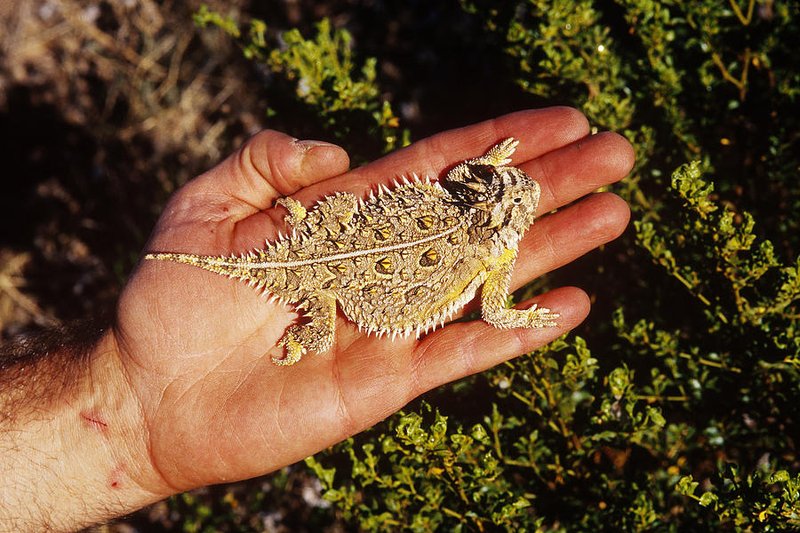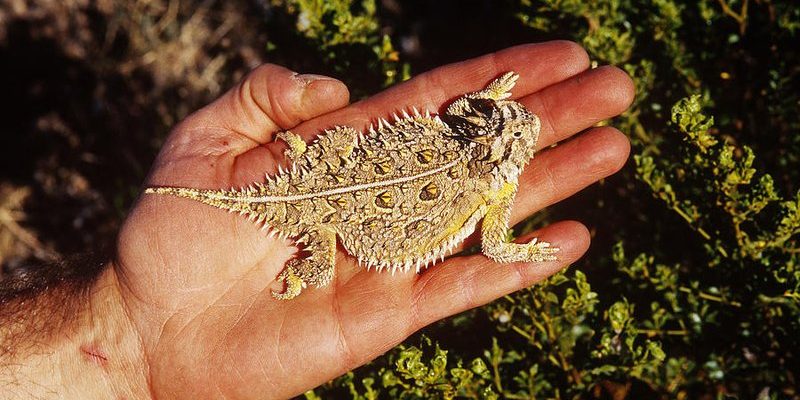
The Texas Horned Lizard, sometimes affectionately dubbed the “horny toad,” is a fascinating little creature that captures the attention of both nature enthusiasts and casual observers alike. With its unique looks—spiky, armored body and distinctive horns—this lizard is not just a pretty face. It has some remarkable adaptations that make it a true survivor in the rugged terrains of Texas and beyond. Imagine a tiny dinosaur roaming the sun-baked deserts, blending in with the rocks and dirt. That’s the Texas Horned Lizard for you!
This lizard is more than just an oddity; it plays an important role in its ecosystem. It’s not only cute and quirky, but it’s also a predator of pesky insects, especially ants, and its presence can indicate the health of its habitat. In this article, we’ll explore everything from its physical traits to its diet, behavior, and conservation status, all while keeping things engaging and informative.
Physical Characteristics
The Texas Horned Lizard is easily identifiable due to its unique physical features. One of its most striking characteristics is its horned head, which is thought to confuse predators and make the lizard appear larger than it actually is. Its body is squat and flat, covered with spiny scales that serve as armor against predators. This lizard can grow up to 4 to 5 inches long, with the males generally being smaller than females. When you spot one, you might think you’ve just come across a little pile of rocks, thanks to its excellent camouflage.
In addition to its horns, the Texas Horned Lizard has a unique color pattern that helps it blend into its arid surroundings. Its skin typically varies from tan to gray, with darker spots and bands that mimic the appearance of soil and stones. This coloration is a vital survival trait, allowing it to hide from birds of prey and other predators. When threatened, it can flatten its body and remain motionless, making it even harder to detect.
Another intriguing aspect of its physicality is its ability to change color slightly depending on temperature and mood. When it’s hot, the lizard might take on a lighter shade to reflect the sun’s rays, while cooler temperatures might prompt it to darken for better heat absorption. This color-change ability is not just for show; it’s crucial for regulating its body temperature in varying environmental conditions.
Habitat and Range
The habitat of the Texas Horned Lizard is as varied as its appearance. Generally found in the deserts, grasslands, and scrublands of Texas, this lizard prefers areas with loose, sandy soil where it can burrow and conceal itself from predators. You might catch a glimpse of them basking on rocks or dirt roads, soaking up the sun and getting their daily dose of warmth.
The Texas Horned Lizard has a range that spans much of the southwestern United States, particularly Texas, New Mexico, Oklahoma, and even parts of Mexico. However, their populations have faced challenges over the years due to habitat loss and other environmental pressures. Luckily, with conservation efforts underway, the hope is to sustain their populations for future generations to admire.
During their active season, which primarily occurs from spring to early fall, you’ll find these lizards sunbathing on warm surfaces or foraging for food. They are often spotted near ant hills, as ants comprise a significant portion of their diet. Understanding their preferred habitat is essential to appreciate how these lizards thrive and how we can help protect them.
Diet and Feeding Habits
The Texas Horned Lizard is primarily an insectivore, meaning its diet mainly consists of insects. While they may enjoy a variety of bugs, their absolute favorite food is ants. In fact, they are known to eat a staggering number of ants in a single day—sometimes up to 1,000! Imagine having a buffet of ants at your disposal; for these lizards, it’s a feast every day!
Besides ants, they will also munch on other insects like beetles, grasshoppers, and caterpillars. Their method of hunting is quite interesting; they often sit still and wait for insects to wander close, giving them the element of surprise. Once they spot a meal, they quickly dart forward, using their sticky tongues to catch their prey. It’s a simple but effective strategy that helps them conserve energy while hunting.
Despite their insect-centric diet, Texas Horned Lizards do drink water, although they often get most of their hydration from the moisture in their food. During periods of drought, this can become a challenge, which is one reason why these lizards are closely linked to the health of their ecosystems. If insects disappear due to environmental changes, the lizard’s survival is jeopardized too.
Behavior and Adaptations
Texas Horned Lizards are known for their unique defensive adaptations, which play a critical role in their survival. When threatened, they can puff up their bodies and flatten themselves out, making it hard for predators to swallow them. In some cases, they can even exude a foul-smelling substance from their skin to deter would-be attackers. Imagine being so well-protected that you can turn into a spiky ball and smell bad enough to make a predator think twice!
You’ll often find them basking in the sun, taking advantage of the warmth to regulate their body temperature. This sun-worshiping behavior is essential for their metabolism, as they rely on external heat sources to stay active. Typically, they are most active during the early morning and late afternoon when temperatures are cooler, allowing them to hunt for food without overheating.
Another fascinating aspect of their behavior is their social structure. Texas Horned Lizards are generally solitary creatures, but during mating season, males can be quite territorial. They often engage in elaborate displays, including head-bobbing and pushing contests, to attract females and assert their dominance. It’s a fascinating world of little battles and courtship rituals that unfold quietly in the wild.
Conservation Status
The Texas Horned Lizard is currently facing conservation challenges. Historically abundant, these lizards have seen their populations decline due to various factors. Habitat loss from urban development, agricultural expansion, and the use of pesticides have all impacted their numbers. Since they rely heavily on specific habitats for food and shelter, any disruption can severely affect their survival.
Conservation efforts are underway to protect these unique lizards. Regional organizations and wildlife groups are working to restore their habitats and create protective laws. Educating the public about the importance of the Texas Horned Lizard and its ecosystem is also crucial. By raising awareness, we can encourage people to take action to preserve the natural areas these lizards call home.
You can help in simple ways, like being mindful of where you walk or play, especially in areas known to be habitats for these charming creatures. Understanding and respecting their role in the ecosystem is vital for their survival.
Interesting Facts
| Common Name: | Texas Horned Lizard |
| Scientific Name: | Phrynosoma cornutum |
| Size: | 4 to 5 inches |
| Diet: | Insects (mostly ants) |
| Habitat: | Deserts, grasslands, scrublands |
| Lifespan: | 5 to 8 years in the wild |
| Conservation Status: | Vulnerable |
The Texas Horned Lizard is truly a remarkable creature worthy of our admiration and protection. With its interesting adaptations and vital role in its ecosystem, it serves as a reminder of nature’s complexity and resilience. Whether you’re lucky enough to spot one in the wild or simply learning about them from the comfort of your home, these lizards represent the beauty of wildlife in Texas.
If you ever find yourself in their natural habitat, take a moment to appreciate their uniqueness and the delicateness of their ecosystem. Every effort we make to protect and conserve species like the Texas Horned Lizard helps ensure that future generations will have the chance to marvel at their subtle beauty.
FAQ
Where can I find Texas Horned Lizards in the wild?
You can typically find Texas Horned Lizards in the deserts and grasslands of Texas, particularly in areas with sandy soil. Look for them basking on rocks or dirt roads during the warmer months. They love warm, dry habitats where they can hide from predators and hunt for their favorite food—ants!
Are Texas Horned Lizards dangerous to humans?
No, Texas Horned Lizards are not dangerous to humans. They are harmless and shy creatures that would rather avoid contact than confront. They rely on their camouflage and defensive behaviors to protect themselves from predators. If you encounter one, just admire it from a distance and let it go about its business!
How do Texas Horned Lizards adapt to their environment?
Texas Horned Lizards have several adaptations that help them survive in their natural habitat. Their spiny scales act as armor against predators, and their color-changing ability helps them blend in with their environment. They also adjust their activity levels according to temperature, basking in the sun to warm up and seeking shade when it gets too hot.
What do Texas Horned Lizards eat?
The diet of Texas Horned Lizards mainly consists of insects, with ants being their primary source of food. They are known to consume a significant number of ants daily, often exceeding 1,000. They also eat other insects, such as beetles and grasshoppers, hunting by remaining still until their prey comes close.
How long do Texas Horned Lizards live?
In the wild, Texas Horned Lizards typically live between 5 to 8 years. Their lifespan can be influenced by various factors, including environmental conditions, availability of food, and threats from predators. In protected environments or captivity, they may live longer due to fewer threats and a stable food supply.
What threats do Texas Horned Lizards face?
Texas Horned Lizards face several threats, including habitat loss due to urban development, agricultural practices, and use of pesticides. These factors can significantly impact their populations, making conservation efforts essential for their survival. It’s crucial to protect their natural habitats to ensure they continue to thrive.
How can I help with the conservation of Texas Horned Lizards?
You can help conserve Texas Horned Lizards by becoming aware of their habitats and supporting conservation organizations that focus on protecting their ecosystems. Be mindful about where you walk and play, especially in areas where these lizards live. Spread awareness about their plight and encourage others to appreciate and protect wildlife.
Do Texas Horned Lizards have any natural predators?
Yes, Texas Horned Lizards are preyed upon by various animals, including birds of prey, snakes, and larger mammals. Their main defense mechanisms include their spiky bodies, camouflage, and the ability to flatten themselves to avoid detection. These adaptations help them survive in a world filled with potential threats.
Can Texas Horned Lizards change color?
While Texas Horned Lizards don’t change color like chameleons, they can shift their coloration slightly based on temperature and mood. They may appear lighter when it’s hot to reflect sunlight and darker when it’s cooler to absorb warmth. This ability plays a vital role in regulating their body temperature.
Is it legal to own a Texas Horned Lizard as a pet?
In many areas, it is illegal to own Texas Horned Lizards as pets due to their conservation status and the protective laws in place for wildlife. It’s best to check local regulations before considering any reptiles as pets. Additionally, wild animals have specific care requirements that can be difficult to replicate in captivity.
What role do Texas Horned Lizards play in their ecosystem?
Texas Horned Lizards play an essential role in their ecosystem as predators of insects, particularly ants. By controlling insect populations, they help maintain a balanced ecosystem. Their presence can also indicate the health of their habitat, making them an important species for conservation efforts.

